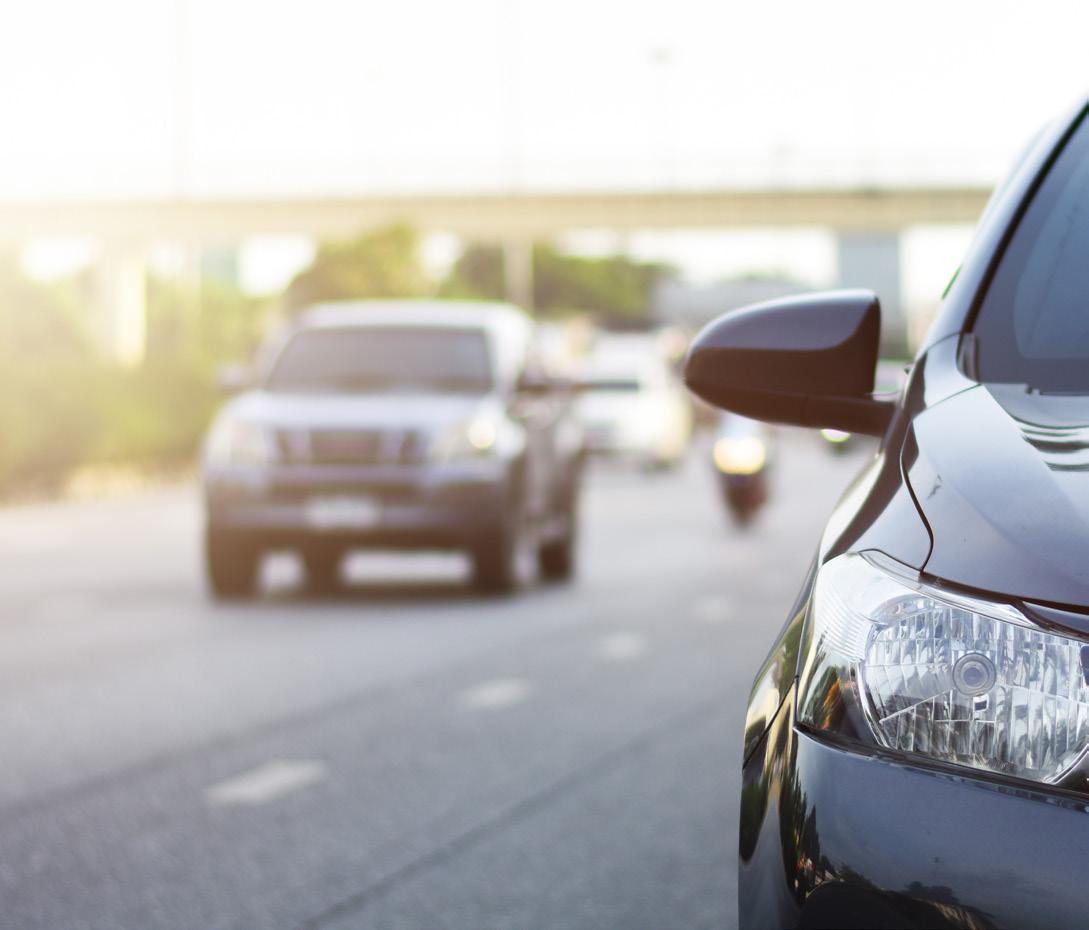
2 minute read
Distracted Driving
Distracted driving Written by Connie Hogue, Director of Human Resources and Safety
When it comes to distracted driving concerns, cell phones are at the top of the list. We have all seen a driver distracted by a cell phone. However, when that person using the phone while driving is us it’s more difficult to notice the risk you are taking.

Connie Hogue MULTITASKING IS A MYTH Driving and cell phone conversations both require a great deal of thought. When doing them at the same time, your brain is unable to do either well. For example, it’s nearly impossible to read a book and have a phone conversation. While driving, distraction often results in crashes due to delayed response times and missing traffic signals.
Multitasking is a myth. Human brains do not perform two tasks at the same time. Instead, the brain handles tasks sequentially, switching between one task and another. Brains can juggle tasks very rapidly, which leads us to erroneously believe we are doing two tasks at the same time. In reality, the brain is switching attention between tasks – performing only one task at a time. The brain not only juggles tasks, it also juggles focus and attention. When people attempt to perform two cognitively complex tasks such as driving and talking on a phone, the brain shifts its focus and people develop “inattention blindness”. When this happens, important information falls out of view and is not processed by the brain. For example, drivers may not see a red light. Because this is a process people are not aware of, it’s virtually impossible for people to realize they are mentally taking on too much.
NO SAFE WAY TO USE A CELLPHONE AND DRIVE Even when talking hands-free, drivers can miss seeing up to half of what’s around them because they are engaged in a cell phone conversation. In 2017, more than 13,000 drivers in Ohio crashed while being distracted by something within their vehicles. The Ohio Department of Transportation (ODOT) reported that 51 of these crashes were fatal, resulting in 55 total deaths. Another 4,668 drivers were in injury-causing crashes, resulting in a total of 6,988 injuries.
OHIO LAW No person shall drive a motor vehicle, trackless trolley, or streetcar on any street, highway, or property open to the public for vehicular traffic while using a handheld electronic wireless communications device to write, send, or read a text-based communication.
OHIO ADULT DRIVERS For adult drivers over the age of 18, distracted driving is a secondary offense, meaning that police cannot make a traffic stop simply because they think they see you texting behind the wheel. However, if they observe any other traffic offense and believe that you were distracted at the time of the infraction, they will likely cite you for distracted driving as an add-on offense. For example, if they notice a marked lanes violation, failure to yield, failure to use a turn signal, or any other infringement, no matter how minor, they can pull you over and cite you for a primary traffic offense as well as distracted driving
DRIVERS UNDER AGE 18 Drivers under the age of 18 may be pulled over for distracted driving as a primary offense. In other words, if you are under 18 and the only offense the traffic officer has observed is that you are texting or talking on the phone or are otherwise distracted in any way, you can be pulled over – and cited for a traffic infringement. Drivers under the age of 18 and drivers on a temporary instruction permit are not permitted to use a cell phone while driving at all. Even hands-free use of cell phones is not permitted for the underage driver.



